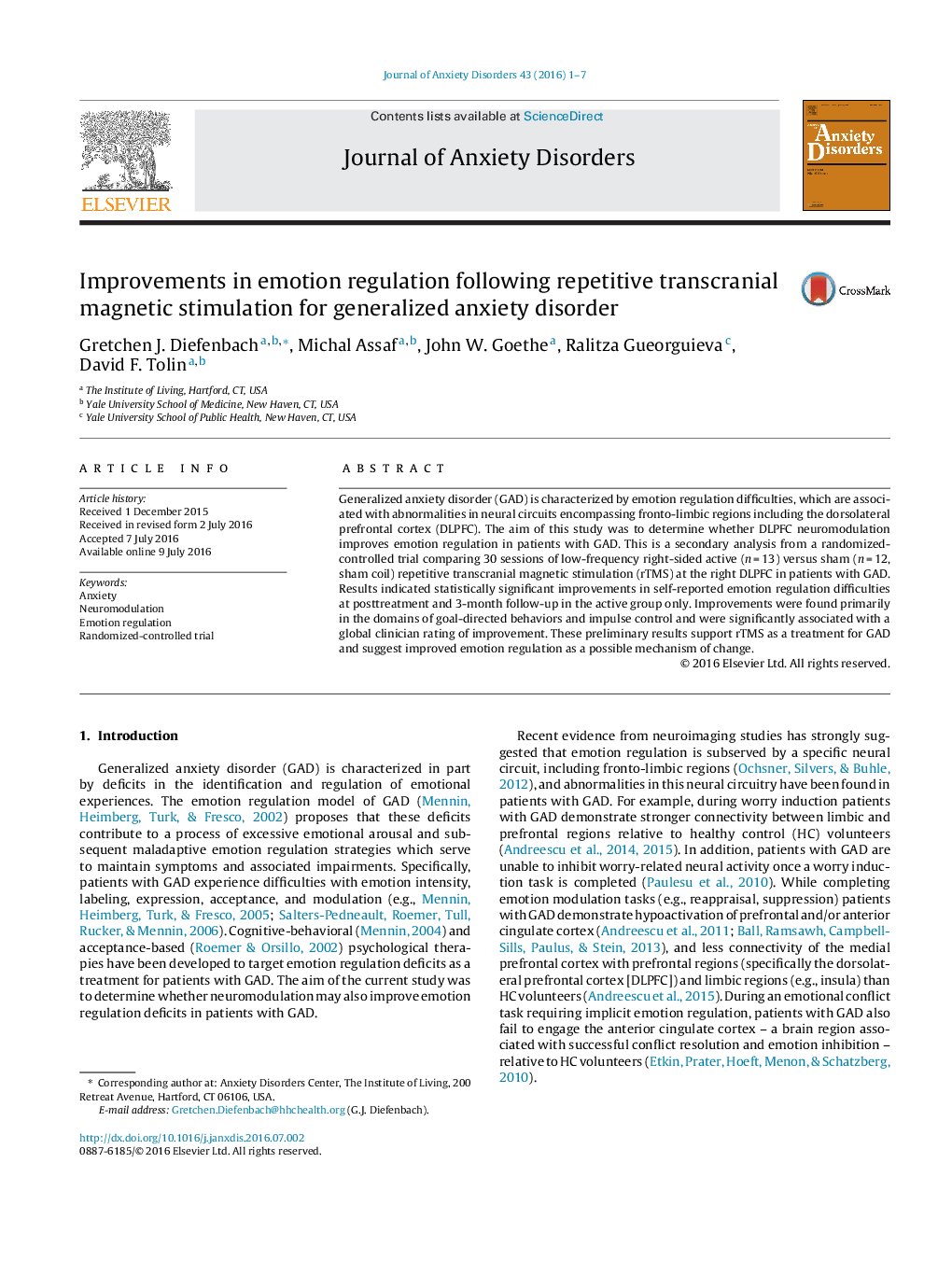| کد مقاله | کد نشریه | سال انتشار | مقاله انگلیسی | نسخه تمام متن |
|---|---|---|---|---|
| 909196 | 1473035 | 2016 | 7 صفحه PDF | دانلود رایگان |
• Emotion regulation improved following active, but not sham, neuromodulation.
• Improvements were found primarily in goal-directed behaviors and impulse control.
• Emotion regulation changes were associated with global clinical improvement.
Generalized anxiety disorder (GAD) is characterized by emotion regulation difficulties, which are associated with abnormalities in neural circuits encompassing fronto-limbic regions including the dorsolateral prefrontal cortex (DLPFC). The aim of this study was to determine whether DLPFC neuromodulation improves emotion regulation in patients with GAD. This is a secondary analysis from a randomized-controlled trial comparing 30 sessions of low-frequency right-sided active (n = 13) versus sham (n = 12, sham coil) repetitive transcranial magnetic stimulation (rTMS) at the right DLPFC in patients with GAD. Results indicated statistically significant improvements in self-reported emotion regulation difficulties at posttreatment and 3-month follow-up in the active group only. Improvements were found primarily in the domains of goal-directed behaviors and impulse control and were significantly associated with a global clinician rating of improvement. These preliminary results support rTMS as a treatment for GAD and suggest improved emotion regulation as a possible mechanism of change.
Journal: Journal of Anxiety Disorders - Volume 43, October 2016, Pages 1–7
